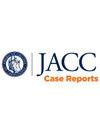Rilonacept for Recurrent Postcardiac Injury Syndrome Pericarditis in a Young Hockey Player
Q4 Medicine
引用次数: 0
Abstract
Background
Postcardiac injury syndrome (PCIS) pericarditis is a common complication following cardiac surgery. Exercise counseling is critical for recovery, but guidelines for return-to-activity are often generalized.
Case Summary
A 35-year-old male experienced a ventricular tachycardia arrest due to a left anterior descending infarct while playing hockey. He underwent coronary artery bypass grafting and developed acute pericarditis due to PCIS. Despite colchicine and prednisone, he had 3 recurrences of pericarditis. Rilonacept (an interleukin-1 blocker) was started in October 2023. After 6 months, his condition improved, and exercise was gradually reintroduced with heart rate limits, initially <130 beats/min, later increasing to 145 to 150 beats/min.
Discussion
Exercise restriction is essential in acute and recurrent pericarditis until symptoms resolve and inflammatory markers normalize. Limited data exist regarding exercise while on interleukin-1 blockers such as rilonacept, and shared decision-making is critical.
Take-Home Message
Gradual reintroduction of exercise based on clinical stability and inflammatory markers is key in managing recurrent pericarditis due to PCIS after coronary artery bypass grafting.
利洛那普治疗复发性心脏损伤综合征心包炎一例年轻冰球运动员
背景:心后损伤综合征心包炎是心脏手术后常见的并发症。运动咨询对康复至关重要,但恢复活动的指导方针往往是笼统的。病例总结:一名35岁男性在玩曲棍球时因左前降性梗死而发生室性心动过速。他接受了冠状动脉旁路移植术,并因PCIS而发展为急性心包炎。尽管使用秋水仙碱和强的松,他仍有3次心包炎复发。Rilonacept(一种白细胞介素-1阻滞剂)于2023年10月开始使用。6个月后,病情好转,逐渐恢复运动,心率限制,最初为130次/分,后来增加到145 ~ 150次/分。在急性和复发性心包炎症状消退和炎症指标恢复正常之前,限制运动是必要的。关于在使用白细胞介素-1受体阻滞剂(如rilonaccept)时进行锻炼的数据有限,共同决策至关重要。根据临床稳定性和炎症标志物逐渐重新引入运动是处理冠状动脉搭桥术后PCIS引起的复发性心包炎的关键。
本文章由计算机程序翻译,如有差异,请以英文原文为准。
求助全文
约1分钟内获得全文
求助全文
来源期刊

JACC. Case reports
Medicine-Cardiology and Cardiovascular Medicine
CiteScore
1.30
自引率
0.00%
发文量
404
审稿时长
17 weeks
 求助内容:
求助内容: 应助结果提醒方式:
应助结果提醒方式:


